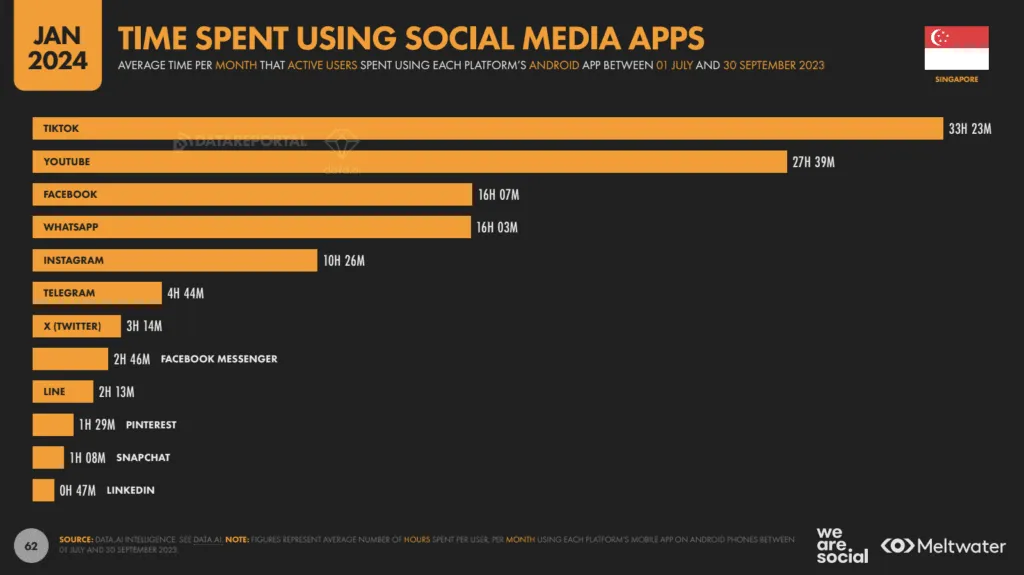With 80.2% of the population owning smartphones—compared to just 62.5% owning laptops or desktops—Singapore’s media habits are now mobile-first. Thanks to Singapore Digital Media Trends, content consumption is happening on-the-go. In 2024, 5.85 million Singaporeans were smartphone users. That number is expected to grow to 6.16 million by 2028. For media producers and marketers, this means designing mobile-first strategies is no longer optional—it’s essential.
Internet Usage Nears Full Penetration

With an internet penetration rate of 95.8% as of early 2025, Singapore is one of the most digitally connected countries in the world. 5.61 million people are now actively online, shaping how news, entertainment, and ads are consumed. This level of digital access creates huge opportunities for personalized media and targeted campaigns through online platforms.
TikTok Takes the Lead in Singapore Digital Media Trends
When it comes to social media, TikTok dominates. Singaporeans spend an average of 34 hours and 29 minutes per month on the platform. YouTube follows closely at nearly 30 hours per month. Despite an 8.4% drop in total time spent on social platforms year-on-year, people are spreading their attention across more platforms, with an average of 7.2 platforms used monthly.
This reflects a shift: content consumption is more fragmented, and brands need to be present across multiple channels to stay relevant.
Programmatic Advertising Is Taking Over
One of the most powerful Singapore Digital Media Trends in 2025 is the rise of programmatic advertising. Fueled by AI-driven personalization, ad spend is shifting toward connected TV (CTV) and over-the-top (OTT) platforms. Brands now use data to deliver tailored content, boosting engagement and ad efficiency.
This trend also ties into the growing popularity of streaming platforms like Netflix, where younger audiences expect on-demand, curated content experiences.
Read Also: Singapore Financial Services Innovation to Transform the Sector
Singapore Digital Media Trends: The Rise of Short-Form and Live Video
Short-form video content is now a dominant format. TikTok’s rapid rise isn’t just about views—its ad revenue has surpassed platforms like Twitter and Snapchat. Meanwhile, live-stream shopping is gaining traction, blending entertainment with instant buying opportunities. This trend offers e-commerce players a powerful way to reach and convert mobile audiences in real-time.
Audio Advertising Finds Its Voice
Audio platforms are another growing space. Voice and music streaming are reshaping how ads are delivered. Spending on voice and audio advertising is expected to exceed USD 113 million by the end of 2024, led by platforms like Spotify and YouTube Music. For brands, this is an underused channel with strong engagement potential—especially with younger listeners.
AI Is Reshaping Content Creation
Finally, the way content is made is changing. AI integration is helping creators produce personalized media at scale. From auto-generated video clips to tailored news feeds, AI tools are now central to Singapore Digital Media Trends in both content and advertising.
What’s Next for Singapore Digital Media Trends?
Based on Singapore Digital Media Trends above, the nation’s digital media landscape is fast, fragmented, and highly mobile. With near-total internet access, AI-powered advertising, and the dominance of video platforms like TikTok, staying ahead means adapting quickly. Brands that invest in mobile-first content, multichannel strategies, and AI tools will be best positioned to thrive.






